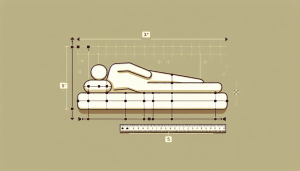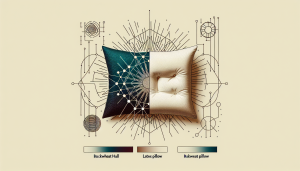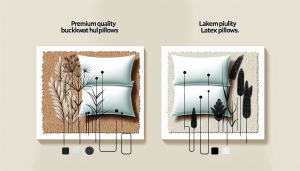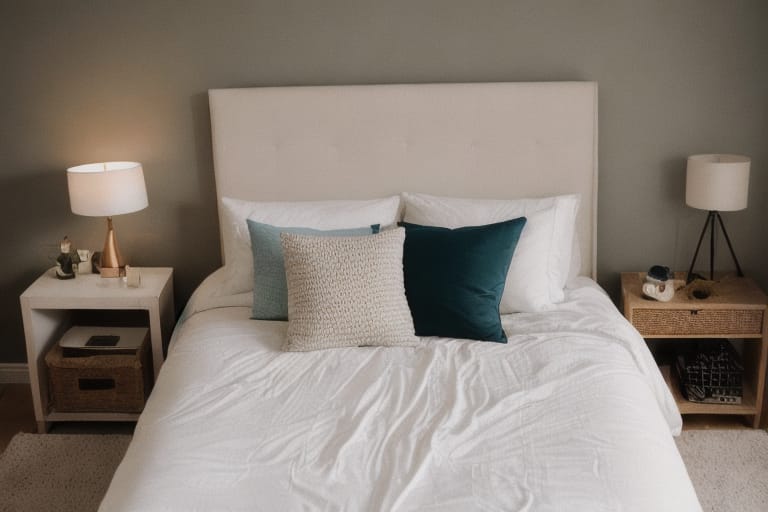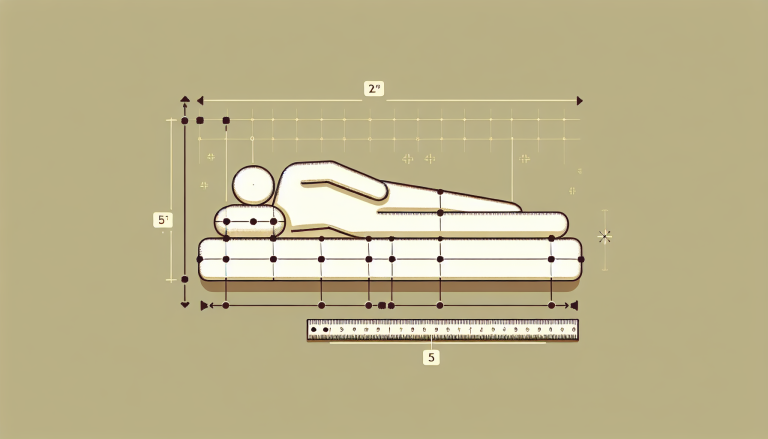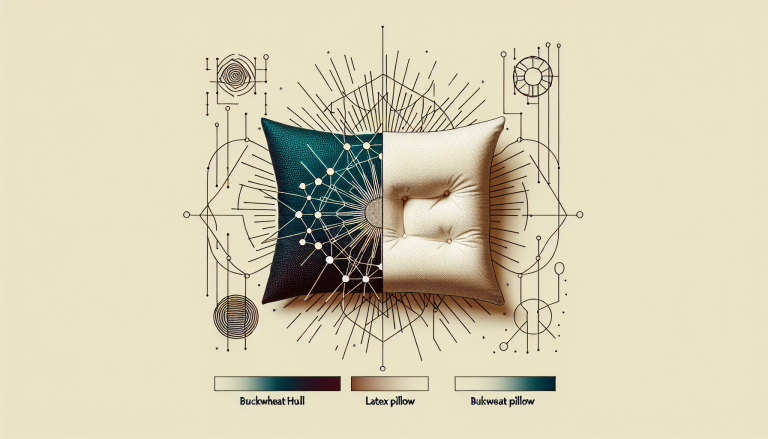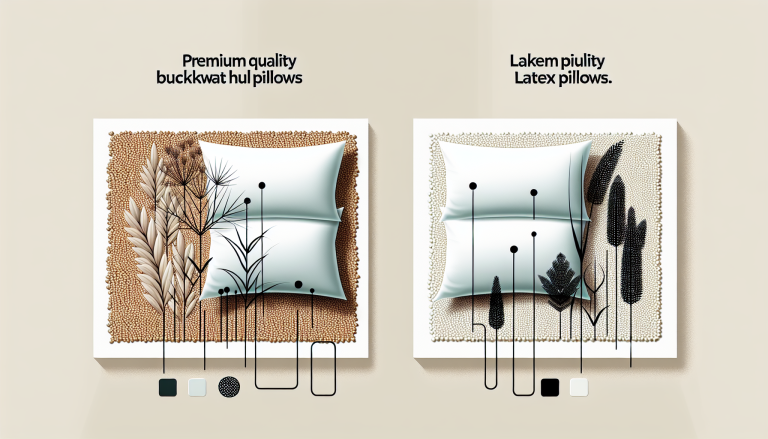Are you in search of the perfect goose down comforter to provide luxury, warmth, and comfort for your bed? With so many options available, choosing the right one can be overwhelming. In this comprehensive guide, we’ll cover everything you need to know about goose down comforters, duvets, and what to look for when shopping for the best one to suit your needs.
Understanding Down Comforters
What is Down?
Down refers to the soft, fluffy under plumage of waterfowl, such as geese and ducks. It consists of clusters of fine filaments that create air pockets, providing excellent insulation and warmth. Down is different from feathers, which have quills and are less soft and insulating.
Types of Down
- Goose down: Considered the best quality down, it comes from mature geese and has larger clusters, providing superior warmth and loft.
- Duck down: Smaller and less expensive than goose down, it still offers good insulation properties.
- Eiderdown: The rarest and most expensive type of down, harvested from eider duck nests.
Fill Power
Fill power is a measure of down’s loft and insulating ability. It represents the number of cubic inches one ounce of down occupies. Higher fill power indicates better quality down with more warmth and loft.
| Fill Power | Quality | Warmth |
|---|---|---|
| 400-500 | Low | Light |
| 600-700 | Medium | Medium |
| 800+ | High | High |
Choosing the Right Fill Material
Down vs Down Alternative
- Down Pros: Superior warmth-to-weight ratio, durability, and compressibility. Down Cons: More expensive, requires special care, and may trigger allergies.
- Down Alternative Pros: Hypoallergenic, easier to clean, and less expensive. Down Alternative Cons: Less durable, heavier, and less compressible than down.
Goose Down vs Duck Down
Goose down typically has larger clusters and provides better insulation than duck down. However, high-quality duck down can be comparable to lower-grade goose down. Goose down is usually more expensive than duck down.
Ethical and Sustainable Considerations
Look for down comforters that adhere to the Responsible Down Standard (RDS), ensuring humane treatment of waterfowl. Some brands also offer recycled down options, reducing environmental impact.
Warmth and Weight Factors
Fill Power and Warmth Levels
- Summer/warm weather: 400-600 fill power
- Cold weather: 700+ fill power
- Year-round: 600-800 fill power
Fill Weight
Fill weight refers to the amount of down used in the comforter. Higher fill weight means more down and greater warmth, but also increased overall weight.
| Comforter Size | Light Warmth | Medium Warmth | Extra Warmth |
|---|---|---|---|
| Twin | 12-16 oz | 18-24 oz | 28+ oz |
| Queen | 18-25 oz | 28-34 oz | 38+ oz |
| King | 24-30 oz | 34-40 oz | 45+ oz |
Climate and Personal Preferences
Consider your regional climate and personal preferences when choosing a down comforter. Hot sleepers may prefer lighter warmth, while cold sleepers may opt for extra warmth. Layering with a duvet cover can also adjust warmth levels.
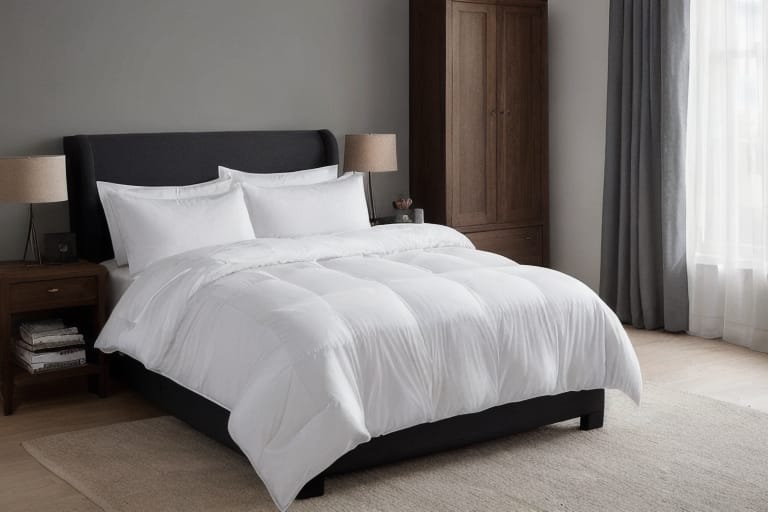
Shell Materials and Construction
Cotton Shells
Cotton is a popular choice for down comforter shells due to its breathability and softness. Higher thread count (300+) and sateen weaves offer a smoother feel.
Silk Shells
Silk shells provide a luxurious feel, are naturally hypoallergenic, and resist wrinkles. However, they are more expensive and delicate than cotton.
Stitching and Baffle Box Construction
Baffle box construction features vertical walls of fabric that separate the top and bottom of the comforter, allowing down to loft fully and prevent shifting. This results in even warmth distribution and increased durability compared to sewn-through designs.
“When shopping for a down comforter, pay attention to the stitching and construction. Baffle box construction is the gold standard for ensuring even distribution of down and preventing cold spots.” – Sarah Johnson, Interior Designer
Maintenance and Care
Dry Cleaning vs Machine Washing
Down comforters should be professionally dry cleaned or machine washed on a gentle cycle with a mild detergent designed for down. Using a duvet cover can minimize the need for frequent cleaning.
Fluffing and Airing
Regularly fluff your down comforter to maintain loft and redistribute the fill. Airing it outside on a dry day can also help freshen the comforter and remove odors.
Warranties and Returns
Look for down comforters that offer extended warranties covering defects and workmanship. Familiarize yourself with the manufacturer’s return and exchange policies before making a purchase.
Brands and Shopping Tips
Reputable Down Comforter Brands
- Luxury: Hamvay-Láng, Scandia Home, Norvegr
- Mid-range: Brooklinen, Parachute, Pacific Coast
- Budget-friendly: Linenspa, Puredown, Egyptian Bedding
When shopping for a down comforter, read product descriptions carefully to identify fill type, fill power, warmth ratings, and shell material details. Online shopping allows for easy comparison, but in-store testing can give you a better feel for the comforter. Always check return policies and customer reviews before making a decision.
“Investing in a high-quality down comforter is worth it for the long-term comfort and durability. Look for brands that prioritize ethical sourcing and sustainable practices.” – Emily Thompson, Sustainable Living Expert
Conclusion
Choosing the perfect goose down comforter involves understanding fill power, warmth levels, shell materials, and construction methods. By considering your personal preferences, climate, and budget, you can find a comforter that provides the ideal balance of luxury, warmth, and comfort. Remember to prioritize ethical and sustainable down sourcing, and follow proper care instructions to ensure your investment lasts for years to come.
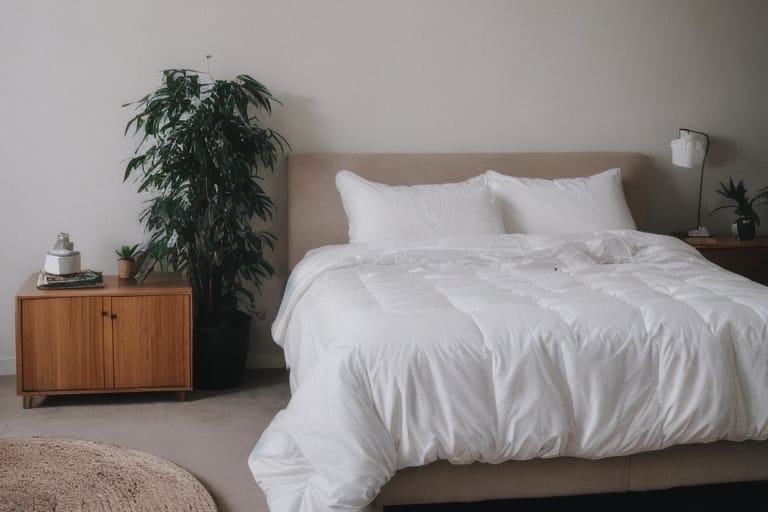
FREQUENCY ASKED QUESTIONS
- What is the difference between white down, gray down, and half-white down? White down comes from mature geese and is considered the highest quality. Gray down is from younger geese and is less expensive. Half-white down is a mix of white and gray down, offering a balance of quality and affordability.
- Are goose down comforters hypoallergenic? While down itself is not hypoallergenic, many brands offer chemical-free and OEKO-TEX certified down comforters that are cleaned to remove allergens. Alternatively, down alternative comforters are inherently hypoallergenic.
- What is the best fill power for a year-round goose down comforter? A fill power between 600-800 is ideal for a year-round comforter, providing medium warmth suitable for most climates and seasons.
- How do I know if a goose down comforter is ethically sourced and cruelty-free? Look for certifications such as the Responsible Down Standard (RDS) or Global Traceable Down Standard (TDS), which ensure animal welfare and ethical sourcing practices.
- What sizes do goose down comforters come in? Goose down comforters are available in standard sizes like twin, full, queen, king, and cal king. Some brands also offer oversized designs for extra coverage and comfort.

